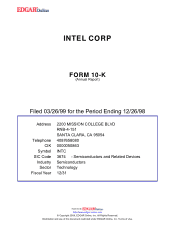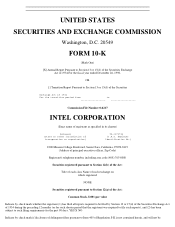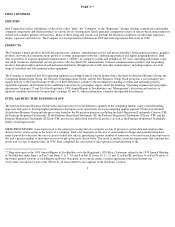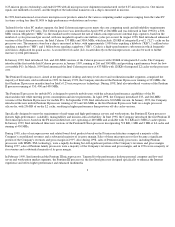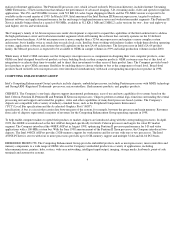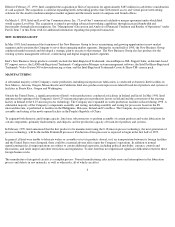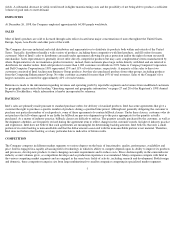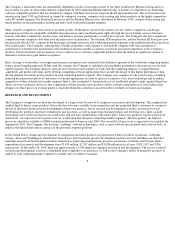Intel 1998 Annual Report Download - page 11
Download and view the complete annual report
Please find page 11 of the 1998 Intel annual report below. You can navigate through the pages in the report by either clicking on the pages listed below, or by using the keyword search tool below to find specific information within the annual report.INTELLECTUAL PROPERTY AND LICENSING
Intellectual property rights that apply to various Intel products include patents, copyrights, trade secrets, trademarks and maskwork rights. Intel
has established an active program to protect its investment in technology by enforcing its intellectual property rights. Intel does not intend to
broadly license its intellectual property rights unless it can obtain adequate consideration. Reference is also made to the heading "Competition"
of this Form 10-K.
Intel has filed and obtained a number of patents in the United States and abroad. Intel has entered into patent cross-license agreements with
many of its major competitors and other parties.
Intel protects many of its computer programs by copyrighting them. Intel has registered numerous copyrights with the United States Copyright
Office. The ability to protect or to copyright software in some foreign jurisdictions is not clear. However, Intel has a policy of requiring
customers to obtain a software license contract before providing a customer with certain computer programs. Certain components have
computer programs embedded in them, and Intel has obtained copyright protection for some of these programs as well. Intel has obtained
protection for the maskworks for a number of its components under the Chip Protection Act of 1984.
Intel has obtained certain trademarks and trade names for its products to distinguish genuine Intel products from those of its competitors and is
currently engaged in a cooperative program with OEMs to identify personal computers that incorporate genuine Intel microprocessors with the
Intel Inside-Registered Trademark- logo. Intel maintains certain details about its processes, products and strategies as trade secrets.
As is the case with many companies in the semiconductor industry, Intel has, from time to time, been notified of claims that it may be
infringing certain intellectual property rights of others. These claims have been referred to counsel, and they are in various stages of evaluation
and negotiation. If it appears necessary or desirable, Intel may seek licenses for these intellectual property rights. Intel can give no assurance
that licenses will be offered by all claimants, that the terms of any offered licenses will be acceptable to Intel or that in all cases the dispute will
be resolved without litigation. Reference is made to the information appearing under the heading "Legal Proceedings" in Part I, Item 3 of this
Form 10-K.
COMPLIANCE WITH ENVIRONMENTAL REGULATIONS
To Intel's present knowledge, compliance with federal, state and local provisions enacted or adopted for protection of the environment has had
no material effect upon its operations. Reference is made to the information appearing under the heading "Legal Proceedings" in Part I, Item 3
of this Form 10-K.
9

